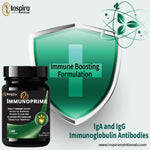The first study showing this decline was in 2012, it examined the human skin and established that the coenzyme as vital to aging
research.
“This study reports for the first time a link between oxidative stress and PARP activity, aging, and a decline in NAD+ levels, in
human tissue. The observed correlation between NAD+ levels and aging adds weight to the idea that NAD+ may play a role in cell senescence and longevity and not simply as an electron carrier.”
In 2015, another human study furthered evidenced the importance of NAD+ demonstrating a decline in levels within the human brain.
“The results of this study provide the first insight, to our knowledge, into the cellular NAD concentrations and redox state in the
brains of healthy volunteers. Furthermore, an age-dependent increase of intracellular NADH and age-dependent reductions in NAD (+), total NAD contents, and NAD (+)/NADH redox potential of the healthy human brain were revealed in this study. The overall findings not only provide direct evidence of declined mitochondrial functions and altered NAD homeostasis that accompanies the normal aging process but also, elucidates the merits and potentials of this new NAD assay for noninvasively studying the intracellular NAD metabolism and redox state in normal and diseased human brain or other organs in situ.”








